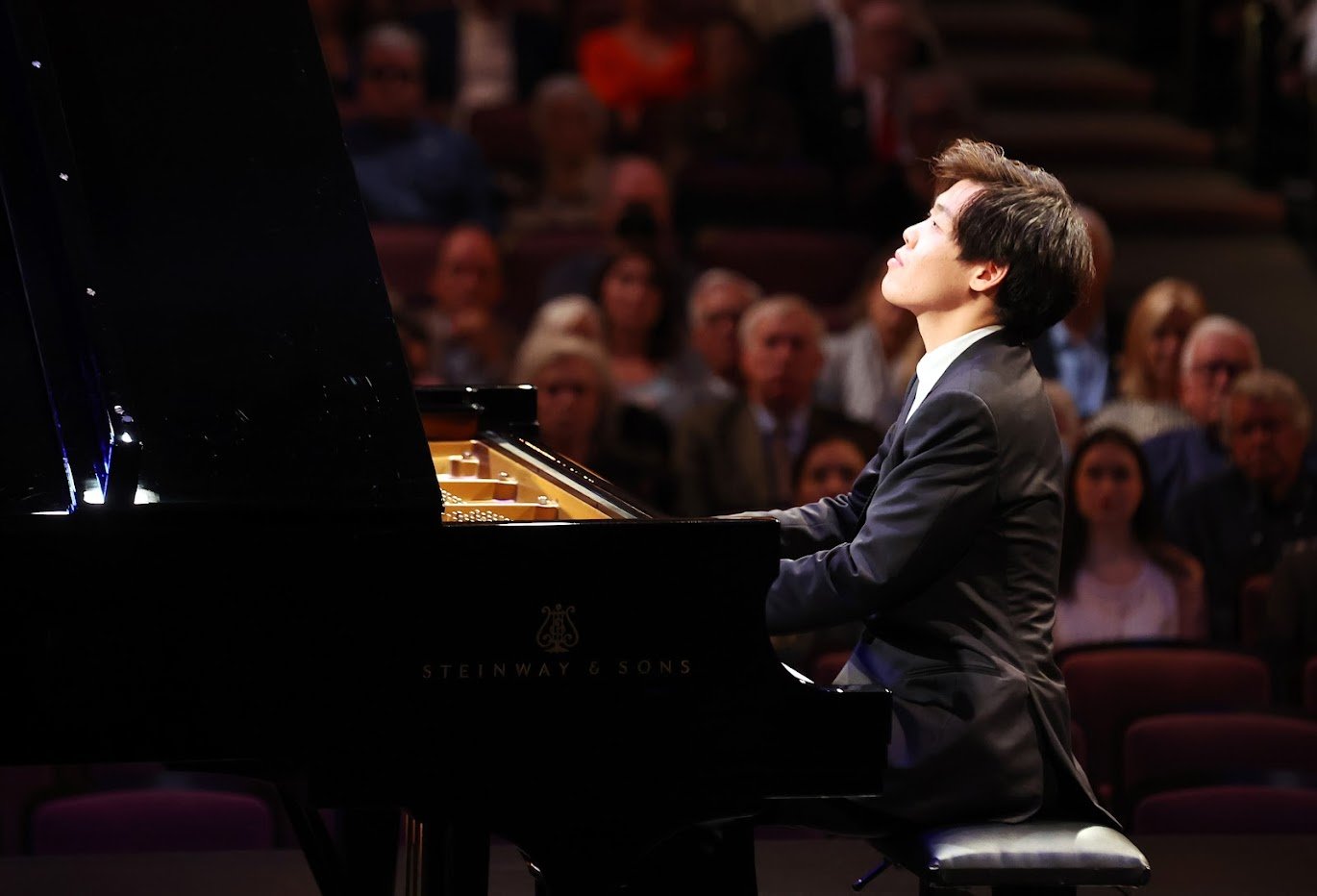Cliburn Competition: Semifinal Concert 1 (Recital), June 8, 2022
—Wayne Lee Gay
By the time the Cliburn Competition reaches the semifinal stage, extraordinary technical virtuosity is a given. The real test now is the ability to harness pianistic athleticism as a means of artistry and expression. Both competitors at the opening night concert of the semifinal round demonstrated almost stunning physical command of a difficult repertoire.
Still, there were many strong points that could point to advancement to the final stage for Chinese pianist Yutong Sun, who opened his recital—and the semifinal round—with the entertaining virtuosity of Spanish impressionist Isaac Albéniz's "Corpus Christi en Sevilla," a musical description of a religious procession in Seville. Sun announced the recurring theme with brilliant, steel-fingered articulation, and achieved hypnotic moments in the quiet interludes. This work is notable for containing the dynamic markings of fffff and ppppp--quintuple forte and quintuple piano, or basically impossibly loud and impossibly soft. Sun created impressive timbres and voicing, and commanding pauses throughout.
Chopin's Polonaise in F-sharp minor, the darkest and most militant of that composer's Polonaises, provided Sun with plenty of opportunities to demonstrate rapid-fire scales and a percussive touch when the music called for it—as well as an elegant and beautifully controlled legato.
Sun followed up with a pair of Preludes by twentieth-century Ukrainian composer Boris Lyatoshynsky, both of which proved to be intriguing and ear-catching rarities. Sun created atmospheric sonority in one (Opus 44, No. 4) and revealed a quick, compelling drama in the other (Opus 38, No. 3).
For his main bid for advancement, Sun produced Prokofiev's massive Sonata No. 8. A product of one of the darkest moments in Russian history, the work has a sometimes surprisingly dreamy, possibly escapist aura. The first movement, in opposition to standard practice, contains almost as much Andante as Allegro, in which Sun produced a wide range of tone and whirlwind scales. The middle movement was appropriately calm, in preparation for the Finale and Sun's closing demonstration of fleet fingers and dynamic range.
Japanese pianist Masaya Kamei chose to first demonstrate command of the classical era with Beethoven's "Waldstein" Sonata, opening with a nervous energy and a slight rush in the famous and unforgettable opening theme. A clean, light touch characterized his performance throughout, particularly impressive in the slowly building crescendo that opens the final movement.
From Beethoven, Kamei moved on to a series of notoriously difficult piano works. Liszt's "La campanella" Etude ("Little Bells") demands incredibly light speed as it imitates the sound of rapidly jingling bells, with fluttering trills (absolutely even in Kamei's performance) over rippling scales. Ravel's Gaspard de la nuit, the next work in Kamei's program, is a set of three tone pictures based on horrific poetic images: "Ondine," an seductive sea creature who drowns her victims; "La gibet," a corpse hanging on a gallows; and "Scarbo," an evil goblin. Kamei showed off rapid, fluid arpeggios in the first and the necessary ability to create a constant, haunting, repeated B-flat octave in the second. In "Scarbo," Kamei attacked and conquered the catalog of technical challenges Ravel included.
Kamei closed with Balakirev's Islamey, one of the few works that can be considered as difficult as "Scarbo." Here, Kamei occasionally allowed velocity to overwhelm clarity.

